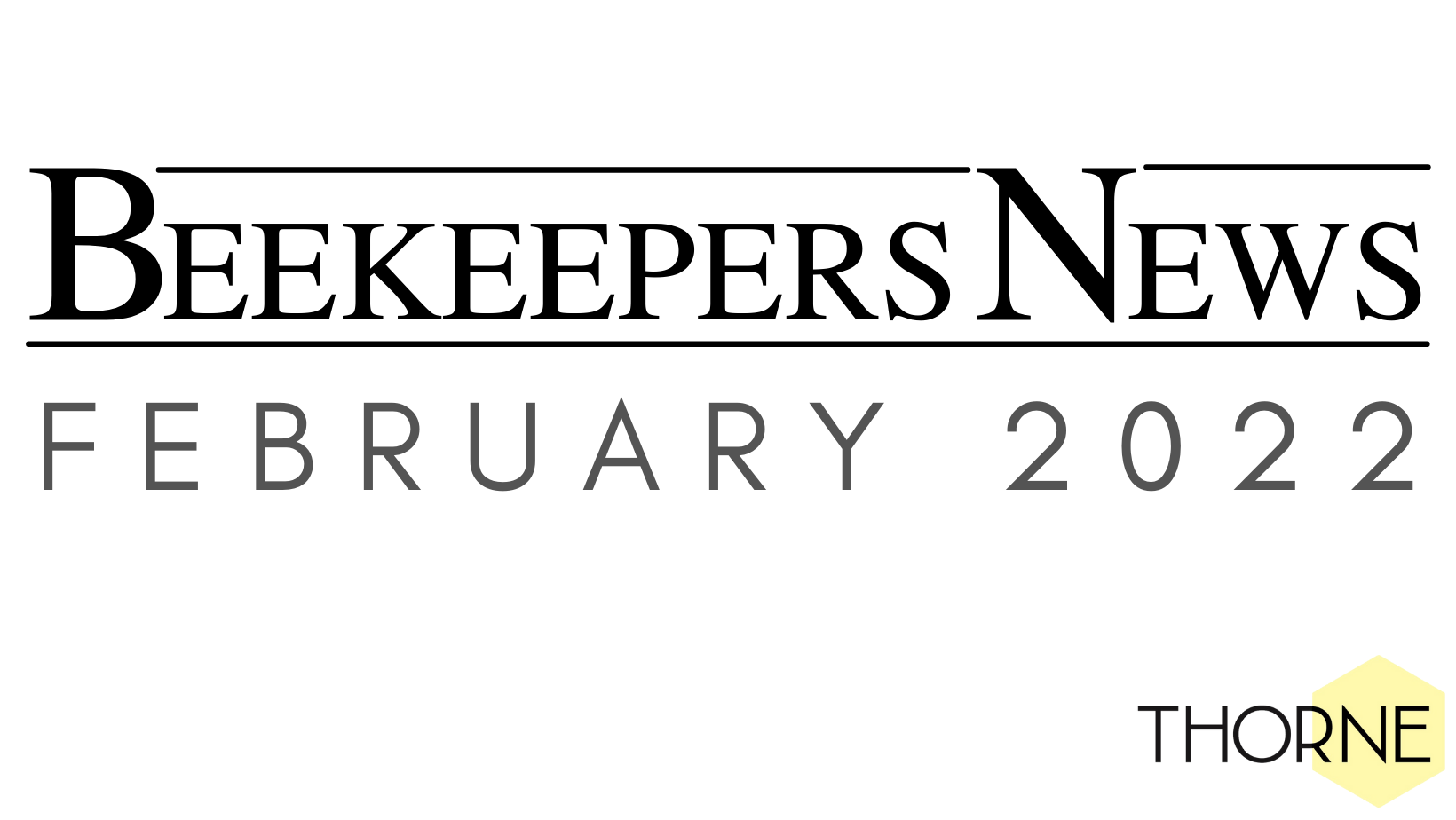|
January has been a busy month here at Thorne. We have had a great response to our Winter Sale and are still powering through to get the orders out! We have started to look forward to the coming year ahead. Courses are being booked, events are scheduled in, and we will be running a Spring Sale in the near future. If you are hosting your own event or beekeeping (or candlemaking!) course, you can add the details of these onto our website here.
If you are visiting our new website for the first time, make sure you take the time to rest your password before shopping. You can do this here.
We have our Hive Barrows on special offer for the month of February. You can read more about them below, including a chance to win one of your own.
We are delighted that going forward, we will be including articles from Veto-pharma in our newsletters. Véto-pharma are a French pharmaceutical company that develops, produces, and distributes innovative products to support honey bee health. Their expertise guarantees the quality of our products, and we are privileged to be the sole distributor in the UK.
|
|
|
|
Special Offer
Hive barrow 10% off
|
|
|
|
This month we have 10% off our Hive Barrows. A heavy-duty hive barrow which can be used to safely and easily move your National hives.
|
|
|
|
|
- Powder coated galvanised steel
- Barrow breaks down quickly and easily to transport in your car
- Heavy duty all terrain tyre to travel over any type of ground
- Only one person needed to use the barrow
- Approach and pick up your hive from either side
|
|
|
Not only are we offering 10% off Hive Barrows for the month of February, but we are also giving away a hive barrow to one lucky customer. Keep an eye out on our social media channels to find out how to enter!
|
|
|
New product
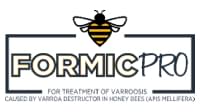
Formic Pro is a fast and easy-to-apply varroa treatment for colonies suffering from varroa.
The active ingredient in this treatment is formic acid. It is sold in two, ten or thirty dose boxes (treats two, ten or thirty hives). Each box contains packs of two strips which should be separated from each other, but the eco-paper wrap should NOT be removed. This acts as a wick to control the release of formic acid into the hive.
The strips should be placed flat across the brood frames from opposite sides, covering the majority of the brood nest between the strips. Two strips should be used whether using single or double brood. If using double brood, then the strips should go on the top of the frames in the bottom box. Supers must not be present or must be removed before treatment.
Galvanised roof metals and galvanised excluders may tarnish or rust when using Formic Pro. The fumes from the formic acid will corrode galvanised steel as they leave the hive, via cone escapes or roof vents. Once the galv. has started to deteriorate it will spread along the edges of the metal.
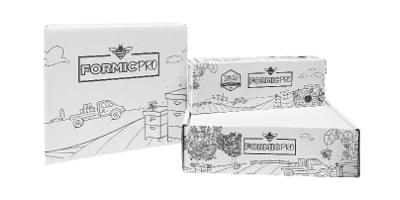
Formic Pro strips should only be applied to the hive between temperatures of 10 and 29.5°C, with three consecutive days of dry weather and when honey supers are not on the hive. The colony needs to contain at least 10,000 bees or 6 frames of good brood. Ventilation is very important so the entrance should be open the full width of the hive.
The strips need to be left in the hive for 7 days, after which they should be taken out before any supers are placed back on the hive. Most of the chemical release will happen in the first 3 or 4 days. Initial brood and bee loss can occur, especially of the youngest uncapped brood, in the first four days. A brood break of three days is normal, and studies show that increased egg laying can be noted by day 14 after treatment. Check your mite levels before and after treating.
Formic Pro has a long shelf life of 24 months, making it an ideal option if you don’t need all the strips in the pack at once.
For more information, view the product on our website.
|
|
|
Equipment Focus
Warré Hive
Ten years ago, there was a growing move towards a more natural way of keeping bees that required less intervention by the beekeeper. The Warre hive fitted the bill perfectly and in 2012 we added this beautiful hive to our range. The article below gives you a little background and describes how to keep bees in a Warre hive. If you have any questions, then please do email beekeeper@thorne.co.uk
Short history of the Warré hive
After many years and many trials with different styles of hive, the French monk Abbe Émile Warré designed the Warré hive, or the ‘Ruche Populaire’. He wanted to create a hive that was simple to use and natural in style, required less economic input than other hives and caused minimal disturbance to the bees. He found that bees thrived better when they were managed box by box and so the idea of small boxes with just top bars was created. The tall narrow structure of the hive mimics a tree trunk, again in keeping with the simple, natural style of beekeeping he wanted to achieve.
Each hive comes with:
- A floor with splayed legs and integral varroa screen and drawer, or a more traditional solid floor
- Four one-size box (some may be observation panels), each with eight plain top bars
- A plain canvas quilt
- A deep quilt with hessian cover and wood shaving insulation
- A ventilated roof
The hive parts come securely nailed and glued.
|
|
|
|
How to assemble your Warré hive:
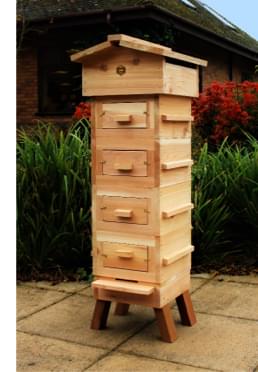
1. Find a flat, sheltered space for your hive to be situated, preferably protected from the wind as the Warré can get quite tall and narrow.
2. Set down the floor, facing the way you want your bees to fly out. You may want to place the floor on a concrete slab or blocks for extra stability.
3. Place one box on top of the floor, spacing the top bars out with 12mm in between each bar, or 36mm between top bar centres. We do stock an eight-frame spacer tool that can help you to accurately space your frames.
4. If introducing a package of bees, place the queen in her queen cage on top of the top bars with the seal broken and candy exposed. If introducing a swarm, you won’t be able to do this, unless you find her and place her in a cage.
5. Place a second box on top, this time leaving the top bars out.
6. Gently tip your bees into the top box. If there are any stragglers left in the box you are tipping them out from, simply place it in front of the entrance to the hive and they should find their own way in once they can smell the queen inside.
7. Once the bees have filtered their way down into the boxes a little, replace the top bars in the top box, spacing them as with the bottom box.
8. Place your plain canvas quilt on the top box, then the deep quilt with wood shavings on top of that and finally the roof on the very top (see Notes and tips section below for feeding at this point).
9. Leave the bees to settle in and draw some comb. Once they look like they have drawn a few combs in the bottom box, you can add another box underneath.
Notes and tips
- Feeding bees when moving them into a hive with no comb or stores is recommended. With a Warré you may need to modify the quilt by cutting a circle or flap out the middle of the canvas quilt and sticking a fine gauze over the top. Contact feeders can then be used to feed syrup. Alternatively, you can make a hole in the quilt and simply place a round rapid feeder over the hole. This should fit inside the quilt box nicely.
- If you have the time and/or patience, you can add a thin, straight wax strip to the underside of the top bars to help encourage the bees to draw their comb from there.
- Bees tend to build comb in the upper boxes and then move down into the lower boxes. It is best to add new boxes to the bottom in the spring so that the bees continue to draw their comb downwards but store their honey in the boxes above. These upper boxes can then be taken off, if wanted, for honey in the autumn.
- Generally, bees in Warré hives are overwintered on two boxes with no less than 12kg of stores.
- Boxes can become heavy, so when adding new boxes underneath, you may find you need a second person to help lift.
- Due to the tall, narrow nature of these hives, it is advisable to attach eyelets to the roof and peg the hive down, particularly during adverse weather.
Bottom of Warre Hive section add… Made of 1” British WRC the hive comes fully assembled and starts at £258.16
|
|
|
Ask The Expert
Moving Hives
Here we have an article written by Sasha, one of our Thorne beekeepers, about what to keep in mind when moving your hives…
How to move your hives
Most beekeepers will find at some stage they need to move their hives. This could be for many reasons, including:
- Hive manipulations e.g., artificial swarms
- The bees need moving to somewhere with less wind/ more sun / more shelter etc.
- Bees have become too much of a nuisance where they are and need moving to a new site
- Opportunities for pollination of crops
There is one very important point you must observe when moving a hive:
Bees should not be moved over 3ft or under 3 miles without shutting them up in the hive and letting them reorientate themselves to their new surroundings.
(These distances vary from book to book and beekeeper to beekeeper but 3ft to 3 miles is an easy one to remember and you can be fairly safe in the knowledge that if you stick to this rule, you will not lose your bees).
This means that you cannot simply move your hive one day from one corner of your garden to the other (unless the distance is under 3ft or over 3 miles!). The reason behind this is that anywhere between this distance, bees will orientate themselves right back to the original site of their hive. This could be disastrous for your colony as the flying bees will not find the new hive position, meaning you lose a lot of bees.
Below are some guidelines to help you move your bees any distance. But first, a few pieces of advice:
- Move bees at night and when outside temperatures are not too high.
- Bees need plenty of ventilation to stop them overheating, even at night.
- Suit up! Bees do not like you moving their home around. Who can blame them?
Moving your hive between 3ft and 3 miles:
- Move the hive less than 3ft every few days so that the bees can keep reorientating themselves back to their hive. This option is only really feasible when time is not of the essence and the hive does not have far to go. It may still need strapping up to ensure the hive components do not fall apart and you will have to be willing to keep moving it!
- If you prefer to move your hive in one go, or the distance is too far to keep lifting the hive every few days then the entrance should be blocked up and the hive moved to its final location. Again, it will need strapping up to make sure the hive doesn’t come apart. Leave it in the new position for a few days before reopening the entrance.
- Another option is to do two long distance moves. This is a bit of a faff, but it stops the bees having to be shut up in the hive for too long. Take the bees to a new spot more than 3 miles away, and leave them there for a few days, long enough for them to get used to their new surroundings. Then move them back and place the hive in the new position. By this time, they will have forgotten the original hive location, and should reorientate to the new position immediately.
Moving your hive under 3ft or over 3 miles:
- To move a hive under 3ft, simply move it by lifting and replacing back down. The bees should be able to find their way back to their hive no problem.
- To move a hive further than 3 miles, again you will need to strap the hive up and use some kind of vehicle but this time on arrival at the new destination, you can just let the bees fly straight away. You may want to let them settle for a few minutes though and make sure you have a veil on when you open the entrance back up; they can get a bit tetchy being cooped up in a hive and being bounced about whilst being transported!
It should be added that these are guidelines for moving hives during the active beekeeping season. In the depths of winter, hives may be moved more easily, needing only to be shut up during travelling and can be opened up once the destination has been reached. If you are very careful, you may be lucky enough to not even need to shut the entrance up on hives that you move a short distance within an apiary, even over 3ft. This is mostly because the bees should be clustering and won’t be leaving the hive again in big numbers until the temperatures increase in spring. But this is also why you have to be very careful not to disturb the nest – probably safest to shut it up anyway!
|
|
|
|
|
Next, we have a piece written by experienced bee farmer Tony Jefferson, about his own experience moving bees…
A look back at moving bees
Recently in various beekeeping newsletters there have been articles about moving bees, which seem, to me, to be rather complex. So, whilst sitting around following my first knee replacement, I have been thinking about how things have changed over the years that I have been involved with bees and beekeeping. My experience goes back to the days of my first pair of wellies (perhaps over 50 years)!
It is often difficult for me to relate to the experiences of beginners, as I was brought up around bees and picked things up either by being told, or shown, what to do and then being left alone to work out why. My memories go as far back as the late 1960s, when dad used to take bees to the moor and involve me in closing them in, ready to move. At that time the method of strapping them together was carried out with bailer band (commonly known as Charley band) and some rather clever slip knots; but this method certainly was not as positive as the ratchet or lever type straps we use today. Having a few escaping bees was always an issue, a handful of glazing putty was often used to fill in any gaps.
We have never used trailers for moving bees, due to excessive shaking up. My first memory of transporting bees was in a BMC Mini 850. It is possible to move 5 hives at a time in a Mini (yes, difficult to understand and possibly not actually legal) The rear seat squab just simply lifted out and dad used to put 2 hives on the back seat. A couple of ½” bolts removed the passenger seat and one hive sat on the floor in its place. The boot lid was hinged from the bottom and hung on 2 wire straps; two hives were then balanced on the boot lid. Off we went with me stuffed in the small space between the 3 hives inside. There was no need to strap them down as they could not possibly move far, not with an 8-year-old being the packing! The only issue that was particularly difficult was scrambling out of the tight space to open the various gates on the way to the heather stance.
Things moved on dramatically when Renault brought out the “6” model, in the mid-70s. It was one of the first hatchbacks with a flat floor in the load bed. This was capable of fitting 6 hives inside. A suitable timber floor conversion allowed the rear 2 to stick out of the back when the tailgate was left open. This represented a remarkable increase in convenience as now the poor helper even had a passenger seat to sit on, making gate opening much easier. Being about 12 years old by then, it also provided an opportunity for me to jump into the driver seat, to begin my driving career, when dad got out to open the gates! Many Renault 6s were used and abused over the years. I passed my test in a hideously orange version – it was a good rust colour, but after a few years you could not tell the paint from the actual rust. Pity Renault stopped making them.
A short test of the Lada Niva followed, as a trial of a 4x4, but it had too high a loading sill and only held 2 hives, and so was quickly swapped for a 1500 Lada Estate. Again, a vehicle suitable for moving bees adequately – but not for much else. To be fair, dad used it as a builder’s van as well as a family car and bee transporter. All his cars were guaranteed a hard life. For a good many years dad got a new car each year on 2nd January. We joked at the time that once you had a Lada you could have nothing else – as no one would take it off you unless you traded in for a new one!
Other estate cars followed, such as Skoda Felicia/Fabia, Ford Focus Estate, Daihatsu Terios, which all had hard lives. Then I got further involved and took over the bulk of the bee moving tasks, with dad now swapping to become the helper. I had a range of company cars such as a Vectra Estate and Land Rover Discovery that were all great for moving bees.
Then double cab pick-ups became more available on the market. These were great from a company car perspective as the benefit in kind for tax was more than equitable.
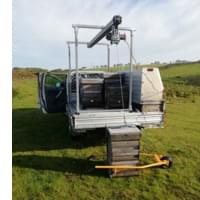
A Ford Ranger Double Cab was a great step forward as the bees could now be kept separate from the seating area. This also significantly reduced the amount of propolis and honey getting in the cab area. Having a 4x4 was, again, a major improvement.
My latest version is probably the best yet and I struggle to think of how to further improve on it. It is a Ford Ranger with a flat bed conversion and a frame that is fitted when bees are to be moved. The winch and mono-rail idea came during a visit to see dad. I sat in the nursing home watching some of the less-mobile people being moved with a system connected to the ceiling. The eureka moment came when I realised that I could fabricate a system using galvanised steel unistrut and the various components. Unistrut is used in my industry for cable supports and hangers. It is commonly referred to as “Meccano for grown-ups.” A bit of contemplation and doodling resulted in the idea for a suitable frame and using the 12v winch off my quad bike. It is a simple and useful attachment that allows for single-person handling of hives without stress or heavy lifting. The use of a Thornes single-person bee barrow allows hives to be simply moved to the rear and lifted onto the flat bed with the winch.
I find it so simple now to move bees without having to organise helpers. Not having to arrange times for meeting up with another person allows for more flexibility, so I can fit in moving the bees more easily around other my tasks, by getting up an hour earlier before work, for example. The flat bed allows me to move more, but I find it simpler to stick to 6 at a time, as 6 hives fit well inside the unistrut frame without having to strap them down.
I reckon I have finally cracked it – but it has taken 50 years of trial and error, with a fair-few disasters along the way, that I am putting down to experience. As they say, “every day is a school day”. But if anyone has any suggestions for improvement, then please let me know, I’m always willing to try more.
|
|
|
|
Beekeeping Blog
January
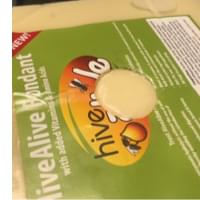
This month our priority has been making sure the bees have enough stores to keep them going. We are quite lucky here at Thornes that the bees we look after cluster into a small ball over winter, meaning their overall consumption of food is fairly low. But of course, we check just in case!
We have used HiveAlive fondant for a bit of a change; one thing we like about these packs is that they are nice and slim, so they fit nicely under the roof without needing to use an eke.
Some colonies had eaten all the fondant we gave them last time, so these got another pack to keep them going. Instead of cutting out a large hole by scoring the pack with a big ‘X’ and folding back the plastic like we would normally do, we simply cut out a little hole in the middle to see if this would minimise mess on the crownboard. We also thought it might keep the fondant softer for longer; the packaging seems to prevent it (and other brands) from hardening, which makes it difficult for the bees to take down. Hopefully the bees will still be able to get to all the fondant – it is something to keep an eye on.
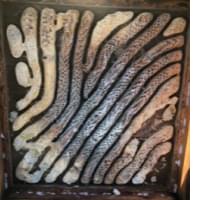
This month we have also had to deal with problems that we did not expect for this time of year. You can see from the picture here that we had a slight issue of an entire roof covered in brace comb! As always with beekeeping, these things always arise when you least expect them. At the end of last season, we placed out some spare equipment, just stands, floors, crownboards and roofs, in preparation for next season. Well, after doing a little apiary maintenance this month, we found this roof to be filled with brace comb. We think it must have housed a small, late swarm of bees at the end of last season! The wild comb is an amazing sight, however, an extra job to clear up. At least it wasn’t full of honey or bees – that really is a messy task!
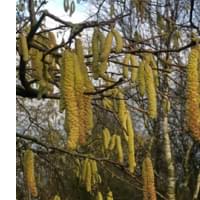
Aside from other winter clear up jobs, it has been reassuring to see the first signs of life this year out in the apiaries. Normally we see crocuses and snowdrops first off but this year the catkins are growing gloriously from the Hazel trees and will hopefully provide some early pollen for our bees, going into February.
|
|
|
Book Review
‘Trees and Shrubs Valuable to Bee’
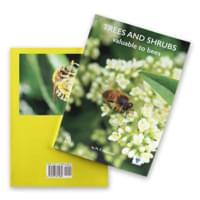
By M. F. Mountain
2021 reprint, with a preface by Eva Crane
Published by Northern Bee Books & IBRA
ISBN: 978-1-913811-08-2
244 x 170 mm – 65g
Paperback. 16 pages.
£9.95 from www.northernbeebooks.co.uk & www.ibra.org.uk/shop
1st Edition. Published by Wiley-Blackwell, 2021. ISBN: 978-1119583370. 225 x 285 mm, 386 pages. Hardback. £133 from www.northernbeebooks.co.uk.
This short booklet (pp16) is a reprint from the original Bee Research Association pamphlet which came out in 1965, and I believe that some of the botanical names may have been revised since then. The booklet comprises a list of shrubs and trees which are all garden-worthy, and the pollen and nectar rewards from each one are noted, column by column. This is very useful, but probably of more interest to gardeners than beekeepers unless they are
planting a new garden. On the whole, beekeepers are canny about the plants which are supplying their bees with nourishment, I think. However, we are well aware that suburban gardens are now providing better habitats for all kinds of bees (and other insects) than the countryside under monoculture, and I welcome this brief booklet which will give some excellent information to help gardeners choose their plants with bees in mind. However, the list it contains has long been superseded by more recent publications, especially Plants for Bees: a Guide to the Plants that Benefit the Bees of the British Isles, by W. D. J. Kirk and F. N. Howes (2021), also published by IBRA. This is an excellent book with superb information, and I believe it to be valuable to beekeepers more than gardeners - after all, most gardeners have limited room for trees or large shrubs, but beekeepers should understand which plants are most beneficial wherever they place their hives.
- Review by Mary Montaut, Editor of The Irish Beekeeper (An Beachaire).
|
|
|
Véto-pharma Blog
Springtime in your bee colonies – Lay a solid foundation for a healthy season!
As the days are getting longer, and we are all looking forward to those extra rays of sunshine, you are not alone in the desire to stretch your legs and get fit for the warm season. Your bees are “stretching their antennae” too – so to speak – to prepare for a new colony buildup. Eggs are already being laid, and as soon as the first flowering sets in and pollen and nectar become available, forager bees are beginning to fly out to collect much-needed nutrition for the colony.
Although varroa may not be your very first thought when you check upon your bees after the long winter months, this time of the year offers you an opportunity that will not return until the next winter treatment is due at the end of the year. Many of us begin the New Year with new resolutions, considering what we would like to implement change, clean-up, renew, or improve things in our lives, our homes, or about ourselves. As beekeepers, hive management, bee health and nutrition, and economic goals for the upcoming season are likely to represent some of the themes of our New Year resolutions.
One way to realize those well intended resolutions and improve honey bee health early in the season, is to start considering varroa treatments as soon as you plan the first visit to your hives. We know that the amount of bee brood in our colonies will increase in the upcoming weeks and months.1 We also know that the development of the varroa population is somewhat lagging behind bee brood development, which makes perfect sense, as varroa mites need the presence of bee brood to be able to reproduce at all.1 This sheer fact in addition to seasonally low monitoring numbers can lead beekeepers to think: Out of sight, out of mind. Meaning, as long as there is no significant varroa infestation present in the hives yet, why think of varroa treatments?
While it is certainly not time- or cost-effective to treat against varroa mites too often or with a mite load of (almost) zero (Psssst! It’s never really “zero”…), early spring treatment offers you the opportunity to reduce varroa mite and viral pressure in your colonies early on. Beekeepers often focus on the late summer or fall treatment, and for good reason. Varroa mite counts after the honey harvest are high1, treatment thresholds have constantly decreased over the last years, and treatment timing has become a matter of colony survival after the summer. However, it is precisely the lack of bee brood that provides opportunity for a quicker and more effective treatment in early spring, before the first honey flow.
Most miticides target varroa mites when they are attached to their adult bee hosts and thus openly exposed to any potential treatment. Mites in the capped brood cannot be reached until they emerge from the brood cell. Thus, it will not come as a surprise to you that treatments are more effective, the less mites are “hiding out” in bee brood cells. The ideal example of this is the winter treatment with oxalic acid in completely brood-free colonies, a few weeks after the first frost.
Although the bee brood already begins to grow in spring, the total amount of brood present in the hives before the first honey flow is low enough to ensure ideal conditions for an efficient and thorough clean-up1, reducing the mite load before the honey season significantly. A mite treatment applied in time before setting up your honey supers for the first time in spring ensures a lower infestation rate through the season. Make sure you select a treatment that can be used with lower temperatures without impairing the efficacy. Your colonies will thank you for reduced mite numbers throughout the season and some added benefits for colony health.
References:
1 – Alexis L. Beaurepaire, Klemens J. Krieger and Robin F.A. Moritz – Seasonal cycle of inbreeding and recombination of the parasitic mite Varroa destructor in honeybee colonies and its implications for the selection of acaricide resistance – 2017 APV-116-EU-N01-01/22
|
|
|
|
Bees for Development
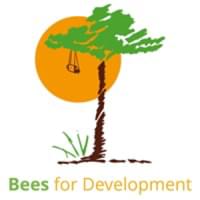
Bumper harvests
Beekeepers who we have trained over the years in Amhara, north Ethiopia are reporting their excellent honey harvests. The weather has been kind, with rain and fine weather coming at just the right times. This is so good to report when civil unrest has caused turmoil in towns and villages not far away - a resilient livelihood in rural areas is ever more important.
In Ghana, too, cashew growers have seen high yields for their crops, with the pollination services of bees providing better incomes to see people through the lean months to come.
Generous beekeepers
We have recently received wonderful support from Cheshire Beekeepers Association, and Malton and District Beekeepers. We are very happy to give talks to beekeeping groups, online or in person. Please do contact us at info@beesfordevelopment or 01600 714848
|
|
|
|
National Honey Show
Our lecture convener is working hard on the programme of lectures for the 2022 National Honey Show.
Meanwhile this month's first of the month Friday 2021 lecture video release was Torbin Schiffer's lecture "Man made breeding and selection vs natural reproduction and selection". We can also share with you advanced notice that there will be additional lecture video releases during February and March. If you sign up as a 'subscriber' to our YouTube channel, for which there is no charge, you'll receive the release date alerts to bonus releases, in addition to our first Friday of the month schedule.
Look forward to seeing you at Sandown Park for the 2022 National Honey Show, 27th to 29th October.
|
|
|
Upcoming Events
- 6th – 8th March – Thorne Spring Sale
- 26th March - Cymdeithas Gwenynwyr Cymru/Welsh Beekeepers' Association’s Annual Convention
- 9th April – BBKA Spring Convention
- 12th & 13th August – Thornes of Scotland Sale Day
- 3rd September – Thornes of Windsor Sale Day
- 17th September – Thornes of Stockbridge Sale Day
- 24th September – Thornes of Devon Sale Day
- 8th October – Rand Sale and Open Day
- 27th - 29th October – The National Honey Show
|
|
|
|
